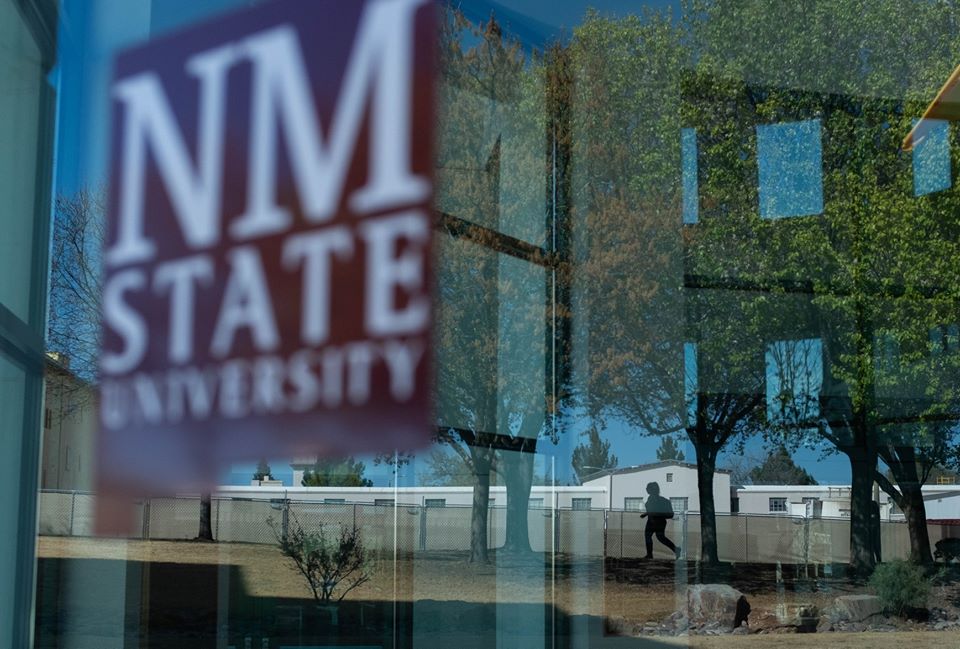Civil engineers give New Mexico's infrastructure a 'C' grade

The group, led by NM ASCE President and NMSU College of Engineering Associate Dean of Academics Sonya Cooper, recently issued the report that was last conducted in 2005. The report assessed the status of important systems such as bridges, water and airports, to develop the 2012 report card for New Mexico. The study, conducted by nearly 50 engineers, took 14 months to complete.
"Everyone depends upon the infrastructure every day and we all take it for granted," Cooper said. "Nationally, our infrastructure is not in great shape. It's a big problem that will take public awareness and community buy-in in order to implement solutions."
On its first report card issued by ASCE in 2005, New Mexico also earned a cumulative grade of C, compared to the national average of D+. Included in that report card were scores for aviation, flood control, rail, roads, schools, solid waste and transit. The 2012 report includes scores for bridges, drinking water and wastewater. Report cards for all states have not been issued yet, so a 2012 national average is not available.
The group graded 10 categories of infrastructure: aviation (D+), flood control (D+), drinking water (C-), bridges (C-), wastewater (C), rail (C), roads (C), solid waste (C), transit (C+) and schools (B-).
In large part, the low grades are due to an aging infrastructure that is deteriorating, stressed by increasing demand and the lack of adequate funding to maintain and rehabilitate such systems.
The report card will be provided to New Mexico's legislators as a leveraging tool to procure funding for infrastructure projects. It will be used to raise public awareness as well.
"Developing the report was a lot of work, but the real hard work is just beginning," said Cooper. "We have to increase the awareness of our public and our legislators as to what the problems are and how they relate to safety and economic health of our communities. They need to be aware of what it will take to bring our systems back up to par."
Along with the grades, ASCE provided recommended actions. First on the list is the preservation of our infrastructure assets through new funding mechanisms. The group recommends regular assessments of the important components of our infrastructure every one or two years. The group also encourages that communities comprehensively consider larger projects that cross city, county and state lines to maximize efficiency, safety and cost effectiveness.
Cooper appointed professional civil engineers who are experts in each of the 10 infrastructure categories to lead the evaluations. They assessed infrastructure in 25 cities and in six counties.
"We tried to make sure that all quadrants of the state were covered," Cooper said. "We also selected leaders who would have access to the information needed from the various community and county agencies."
Each infrastructure category was evaluated on the basis of capacity, condition, funding, future need, operation and maintenance, public safety and resilience. The final report discusses how these are defined by each of the ten infrastructure categories and breaks down how these components are weighed based on the overall level of impact to the system. Five recommendations are summarized. "We need to implement the mechanisms necessary to succeed," said Cooper. "Our state does have good master plans in place. The next steps are increasing public awareness and implementing strategies to protect our future by prioritizing these plans."
Lead evaluators:
• Aviation: Jane M. Lucero (N.M. Aviation Division)
• Bridges: Ken White (N.M. Department of Transportation commissioner)
• Drinking Water: Tim Cynova (Albuquerque Bernalillo County Water Utility Authority)
• Flood Control: J. Philip King (Elephant Butte Irrigation District; NMSU Department of Civil Engineering)
• Rail: Steven Metro (Wilson & Company)
• Roads: Ruinian Jiang (NMSU Department of Engineering Technology and Surveying Engineering)
• Schools: Kenny Stevens (NMSU Department of Engineering Technology and Surveying Engineering)
• Solid Waste: Jack Chapelle (Engineering Solutions & Design, Inc.)
• Transit: Ajay Singh and Patrick Byrd (Lee Engineering)
• Wastewater: Bruce Thompson (Water Resources Engineer)
Click here to view the report in its entirety: http://engr.nmsu.edu/pdfs/12_Infrastructure%20Report%20Card.pdf.


